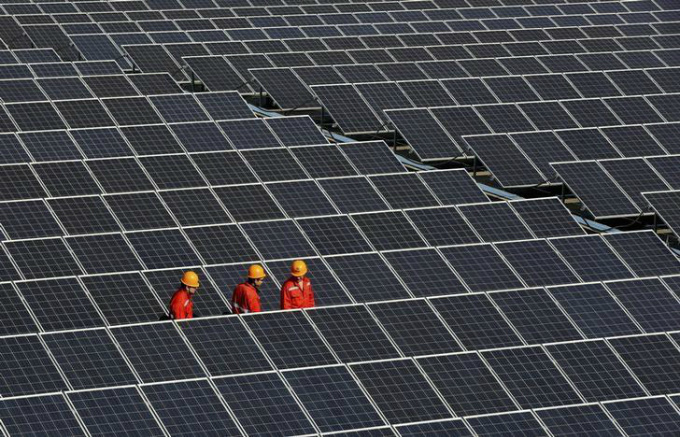Recent innovations in solar power technology have made Vietnam’s 9.35 cents per kWh FIT attractive to private investors.

A long-awaited proposal to extend a key pricing incentive for solar power projects in Ninh Thuan Province has been approved.
The Government has issued Resolution No. 115/NQ-CP that allows solar power projects in the central province of Ninh Thuan to enjoy a feed-in tariff (FIT) of 9.35 cents per kilowatt-hour for a period of 20 years as long as they begin commercial operations by the end of 2020.
This is an extension of the earlier commercial operation date (COD) deadline of June 30, 2019, applying to all localities, which was set by the Prime Minister’s Decision No.11/2017/QD-TTg.
The extension of COD for Ninh Thuan, as specified in the new resolution, will hold good until projects that were approved by the Prime Minister reach a combined capacity of 2,000MW.
The FIT for subsequent projects has not been finalized yet.
Ninh Thuan and Binh Thuan are central provinces that have the greatest potential for renewable energy in the country.
The COD extension is part of a package of incentives the Government is offering Ninh Thuan to support its 2018-2023 development, based on a proposal by the Ministry of Planning and Investment (MPI).
The MPI first submitted to the Government a COD extension proposal for Ninh Thuan in early July, but later in the month, the Government Office issued Official Letter No. 7108 stating that the deadline remains unchanged.
The new resolution has given investors hope that the COD deadline would also be extended to other localities later this year, an industry expert told VnExpress International, declining to be named.
FITs are payments made for supplying renewable energy to the national grid.
Recent innovations in solar power technology that have helped bring down production costs dramatically have made Vietnam’s 9.35 cents per kilowatt hour tariff attractive to private investors.
Hundreds of private investors have submitted proposals to set up solar farms, but the June 30, 2019 deadline was too tight, energy experts had said.
The projects can get entangled in land acquisition hiccups, procedural lags and a lack of master zoning plans for solar power development at the national and provincial levels, they added.
There were also concerns over infrastructure needed for the solar power projects to connect to the national grid.
There are no definitive answers now to questions about pricing for solar power connected to the grid after the end of 2020 in Ninh Thuan and after June 30, 2019 in other provinces.
How the FITs are decided after June 30, 2019 could depend on what technology prices will be at a specific period of time, according to the Electricity Regulatory Authority of Vietnam (ERAV).
Meanwhile, power authorities are considering piloting auctions as an alternative option to FITs after June 2019.
ERAV has sought World Bank assistance and hired consultants to study auction mechanisms.
Bidders offering the lowest prices to the Electricity of Vietnam (EVN), the country’s sole power distributor, will be awarded development contracts.
MoIT has approved around 70 solar projects with a total capacity of over 3,000 megawatts to be commissioned before June 30, 2019.
Vietnam currently relies largely on hydropower and thermal power plants for its electricity demands, but these have drawn frequent domestic and international criticism for their social and environmental impacts.
Solar accounts for just 0.01 percent of the power output, but the government plans to increase this ratio to 3.3 percent by 2030 and 20 percent by 2050.
By 2030 Vietnam aims to produce 10.7 percent of its electricity from renewable sources, with wind energy being the other main option.
Source: https://e.vnexpress.net







